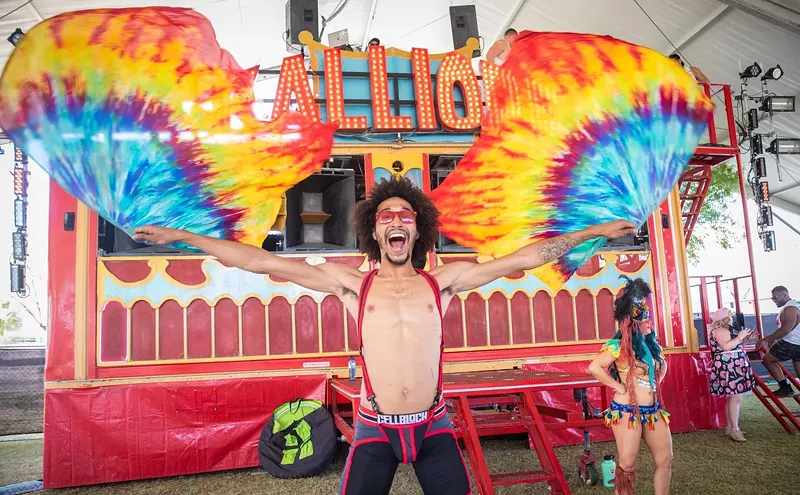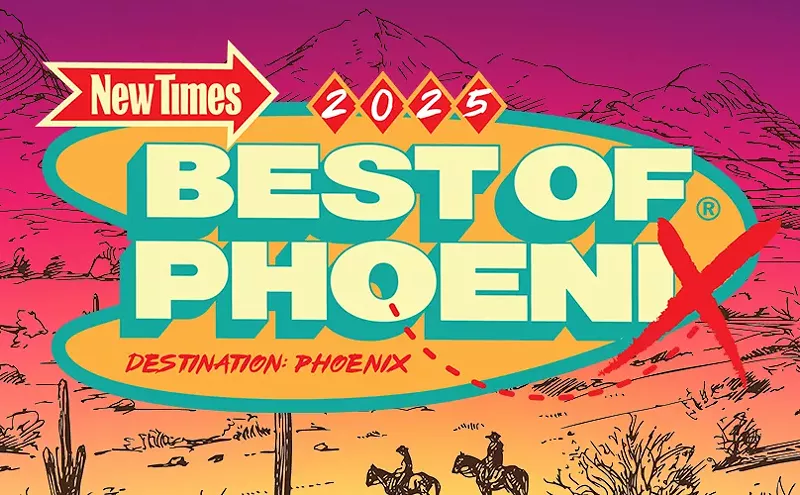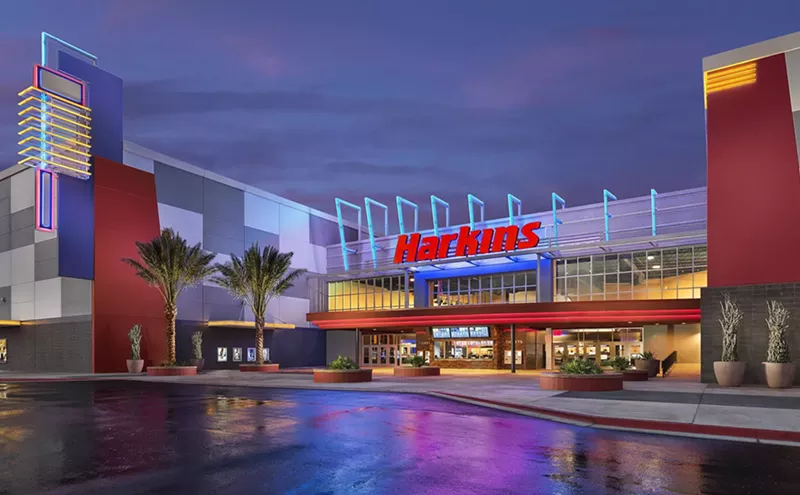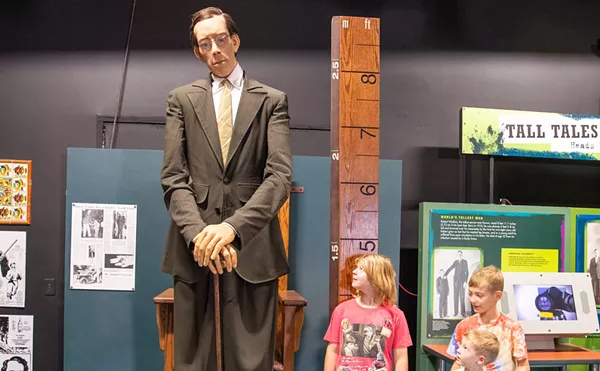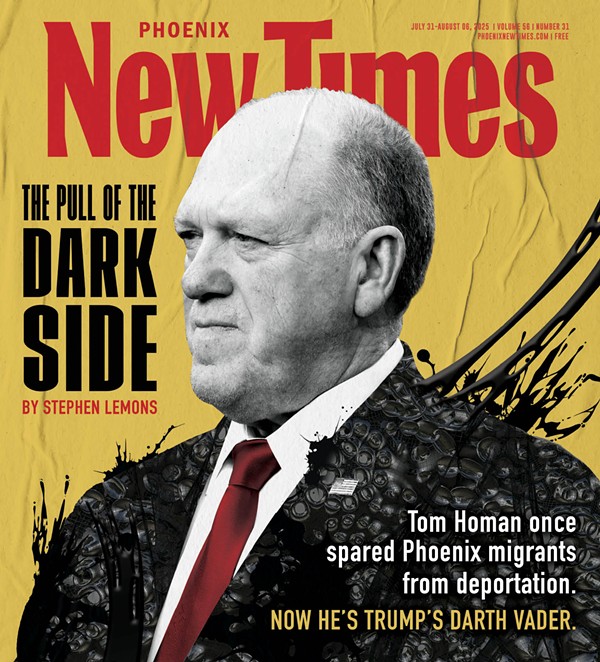Chicago, Pittsburgh, and, of course, Manhattan, the ur-American city, are the stars of this show of work by various artists drawn from PAM's permanent collection. But the PHX is there, indirectly. In the paintings and prints of skyscrapers, factories and subway stations, you can see why Phoenix, a city with a horizontal soul, exists.
Most of these images don't show the city as a glimmering Oz where dreams come true and glamorous people live glamorous lives. This is not the city where Carrie Bradshaw clicks down Fifth Avenue in Manolos or developers turn warehouses into million-dollar lofts for status-conscious bobos. This is the city as seen in a Jacob Riis photo, a hellhole where dirty-faced, tubercular ragpickers shuffle down crowded tenement streets. This is the city as industrial inferno, where smokestacks belch clouds of poison into the sky, and skyscrapers blot out the sun. Ralph Kramden yelled at Alice in a cramped, shabby apartment in this city, a place that's every red-state dweller's nightmare, a place that propels people to pack up and flee to sun-washed places like Phoenix where gated communities keep out the riffraff and there's plenty of parking.
The show's mostly negative view of cities is surprising, because it comes more than a decade after New Urbanism and Friends made urban living desirable again. Loft apartments, light rail and redeveloped downtowns are the symbols of enlightenment and status -- even in Phoenix.
Part of the reason for the dated, neo-con outlook is the age of the art in the exhibition. The newest piece was made in 1979, two years after the looting and lawlessness that occurred during the New York City blackout convinced the good people of the heartland that the city, any city, was bad. Most of the work dates to the period between 1920 and 1950, when the popular view of cities had begun to sour, and moving out to the bucolic 'burbs was the American dream.
The other reason may be that PAM's permanent collection is full of art generously donated to the public by people who came to Phoenix precisely because they hated cities. Skyscrapers are to the Phoenician what a Prius is to a NASCAR fan. These collectors no doubt bought art that reflected their own dim view of big ol' metropolises.
Look at Samuel Chamberlain's tiny, precise etching of a Chicago street scene and you can feel the cold January wind howling in off the lake as you stand, shivering, on the El platform. Gray buildings tower over gray streets, and the only sign of life is a couple of Model Ts that can be glimpsed, just barely, in the shadows of the buildings. There isn't a human being in sight. Sweet home Chicago, my ass, some transplanted Illinoisan must have muttered as he pulled out his checkbook and bought the undated Drizzly Morning, Chicago for a wall in his house in Paradise Valley.
Reginald Marsh's wonderfully moody 1939 watercolor Death of Dillinger gives us yet another glimpse of city as dystopia. A gray, faceless mob of shooters gun down gangster John Dillinger outside a Chicago theater. Little more than the barrels of their weapons and their fedoras are discernible. Dillinger crumples, and you can't see his face well, either. A pair of female passersby glance over their shoulders at the scene, visibly annoyed by the hubbub in the sooty, shadowy street. Can't you guys kill somebody a little more quietly? It's just another day in the urban jungle, another stiff headed for the morgue.
Not all of the work in the exhibition vilifies densely populated municipalities. William Gropper's humorous 1948 lithograph of Joe Magarac, a John Henry-type folk figure of the Pittsburgh steel mills, shows the city as a place that can be survived -- bested, even -- by muscle and will. A grinning Magarac bends a steel beam as a gaggle of steelworkers gape in awe. The demonic silhouettes of blast furnaces loom behind them all, but Magarac's might dwarfs them, making them seem less sinister.
Raymond Jonson's 1932 oil painting City Dynamism captures the energy and thrum of urban vitality in a vibrantly colored abstraction that suggests a factory's smokestacks and machinery. Jonson's forms undulate with life and warm colors, suggesting a living, breathing being instead of a cold, menacing machine.
It's not just the buildings of the city that come off as undesirable in most of the work. When we see people among the buildings, which isn't often in this show, they're generally shopgirls, laborers or some other ilk of have-not.
This does not mean you should skip "Big City." There's breathtaking work by artists such as John Sloane, Richard Estes, and Louis Lozowick. And you can see our culture growing more abstract and complex in the progression of images, as cityscapes morph from finely detailed 19th-century depictions of two- and three-story buildings to 20th-century Cubist blurs of skyscrapers that seem to stretch to infinity. But because "Big City" doesn't include any images made in the past quarter-century, its view of our concept of the city is incomplete.
Somebody needs to buy PAM one of Phoenix painter Colin Chillag's sprawlscapes that show the typical 21st-century metropolis, a titanic web of subdivisions and strip malls. In 2005, it's the suburb, not the city, that disconnects, numbs and dehumanizes.



